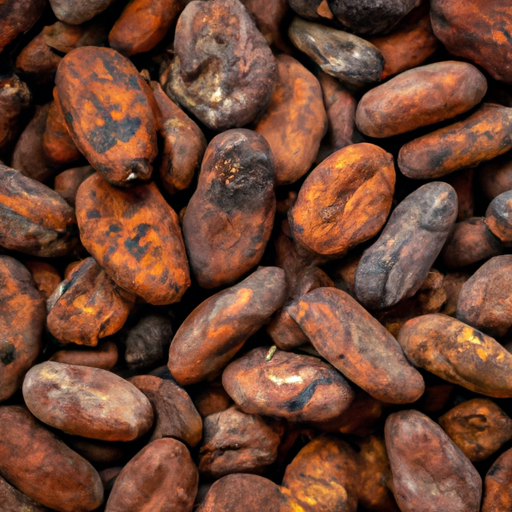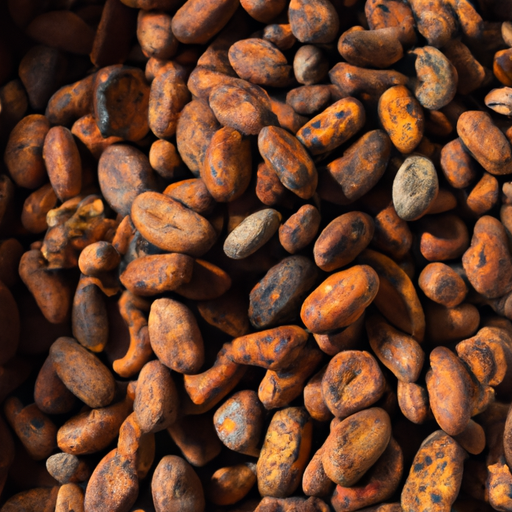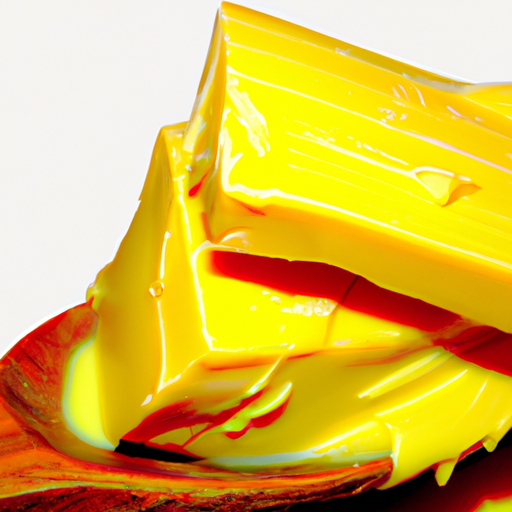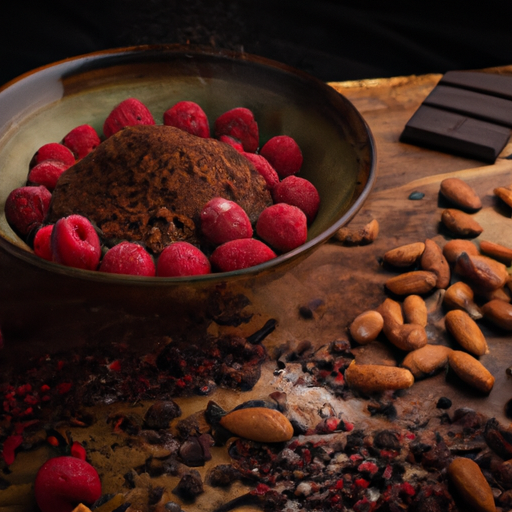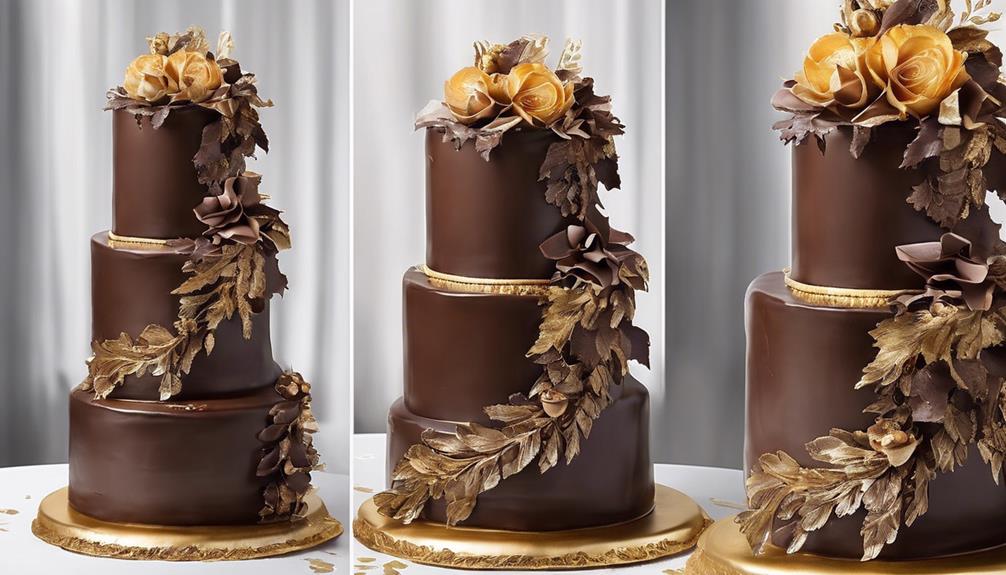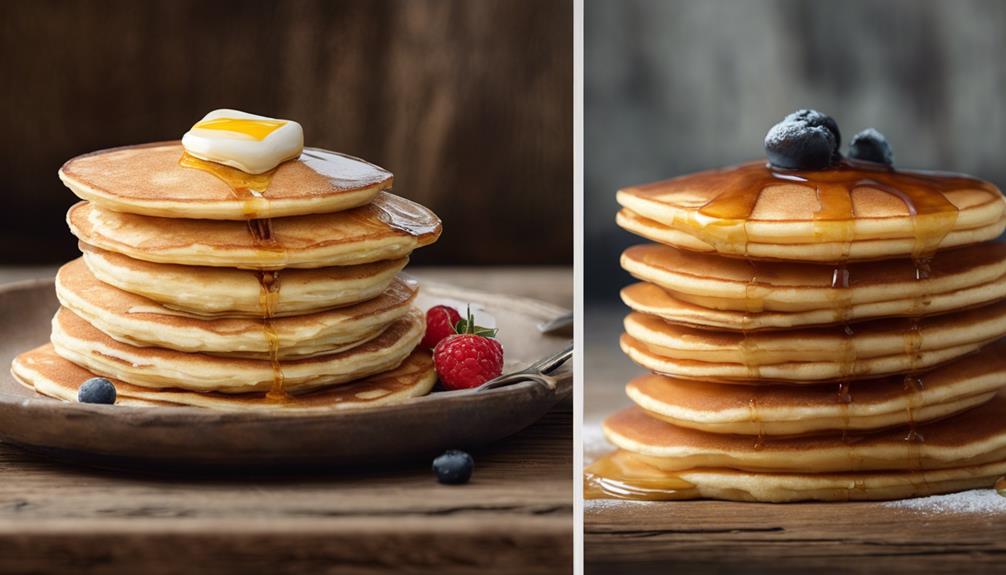As I sit here, enjoying a piece of luxurious, smooth raw cacao, I can’t help but be amazed by the secret benefits it contains. In addition to its divine flavor and tempting aroma, this delicious indulgence is packed with vital nutrients.
One such nutrient that catches my attention is zinc. Zinc plays a vital role in our bodies, supporting immune function, DNA synthesis, and wound healing. But how much zinc does raw cacao actually contain?
In this article, we will explore the zinc content in raw cacao, unraveling its mysteries and uncovering its potential benefits. We will also delve into the recommended daily intake of zinc, other food sources, and the potential symptoms of zinc deficiency.
So join me on this journey as we unlock the secrets of zinc in raw cacao and discover new ways to incorporate this delightful ingredient into our daily lives.
Key Takeaways
- Raw cacao is a rich source of zinc.
- Raw cacao naturally increases zinc intake without the need for supplementation.
- Raw cacao contains compounds that enhance zinc absorption in the body.
- Incorporating raw cacao into the diet is a delicious and nutritious way to increase zinc intake.
The Importance of Zinc in the Body
Understanding the importance of zinc in the body is crucial for overall well-being. Zinc plays a vital role in various bodily functions, including immune system support, DNA synthesis, and cell division.
One of the key benefits of zinc is its ability to enhance the immune system. It helps in the production and maturation of white blood cells, which are responsible for fighting off infections and diseases. Research has shown that zinc supplementation can reduce the severity and duration of common cold symptoms.
Adequate zinc levels also promote wound healing and maintain healthy skin. Zinc is involved in collagen synthesis, which is essential for skin health and the healing of wounds. It also helps to regulate oil production in the skin, preventing acne and other skin conditions.
To ensure optimal health, it is important to meet the recommended daily intake of zinc. The recommended daily intake for adults is around 8-11 milligrams for men and 8 milligrams for women. Pregnant and breastfeeding women may require higher amounts.
Incorporating zinc into your diet can be done through the consumption of zinc-rich foods such as oysters, red meat, poultry, beans, nuts, and whole grains. Zinc supplements are also available, but it is always best to consult with a healthcare professional before starting any supplementation.
In conclusion, zinc is a vital mineral that plays a crucial role in various bodily functions. From supporting the immune system to promoting wound healing and maintaining healthy skin, zinc is essential for overall well-being. Meeting the recommended daily intake of zinc through diet or supplementation is important for optimal health.
Recommended Daily Intake of Zinc
To meet your daily zinc needs, it’s important to consider the recommended intake and incorporate diverse sources of this essential mineral into your diet. The recommended daily intake of zinc varies depending on factors such as age, sex, and pregnancy status.
For adult men, the recommended intake is 11 mg per day, while adult women require 8 mg per day. However, during pregnancy and lactation, women may need higher amounts. Zinc supplementation can be an option for individuals who struggle to meet their requirements through diet alone.
It’s important to note that excessive zinc intake can have adverse effects on health, so it’s best to consult with a healthcare professional before starting any supplementation.
Understanding raw cacao can provide insights into its zinc content and how it can contribute to your overall zinc intake.
Understanding Raw Cacao
Delving into the world of raw cacao unveils a treasure trove of fascinating insights.
Raw cacao, derived from the Theobroma cacao tree, has gained popularity due to its potential health benefits. It is packed with essential nutrients and powerful antioxidants, making it a great addition to a balanced diet.
Raw cacao is known to contain high levels of minerals like magnesium, iron, and zinc, which are crucial for various bodily functions.
Zinc, in particular, plays a vital role in supporting the immune system, promoting wound healing, and aiding in DNA synthesis. It is also involved in maintaining healthy skin and hair.
Understanding the health benefits and nutritional value of raw cacao sets the stage for exploring its zinc content and its potential impact on our overall well-being.
Zinc Content in Raw Cacao
Exploring the world of raw cacao reveals an unexpected source of an essential mineral that can greatly benefit our health.
Raw cacao is not only a delicious treat, but it also contains a significant amount of zinc, a mineral that plays a vital role in our body.
Zinc is known for its many benefits, including supporting a healthy immune system, promoting wound healing, and aiding in DNA synthesis. Additionally, zinc is crucial for proper growth and development, and it helps with the metabolism of carbohydrates, proteins, and fats.
Furthermore, raw cacao contains other compounds that can enhance zinc absorption in the body, making it even more beneficial.
Transitioning to other food sources of zinc, we can explore various options to ensure we meet our daily zinc requirements.
Other Food Sources of Zinc
You won’t believe the variety of foods that can provide you with a powerful dose of this essential mineral. In addition to raw cacao, there are plenty of other food sources that are rich in zinc.
Oysters, for example, are one of the best sources of this mineral, containing more zinc per serving than any other food. Other seafood like crab, lobster, and shrimp also provide a significant amount of zinc.
If you’re not a fan of seafood, don’t worry, there are plenty of options for you too. Red meat, poultry, and dairy products like cheese and milk are all good sources of zinc. Additionally, legumes, nuts, and whole grains can also contribute to your zinc intake.
So, there are many delicious ways to ensure you’re getting enough zinc in your diet. Now let’s explore the potential consequences of zinc deficiency and the associated symptoms.
Zinc Deficiency and Symptoms
Now that we’ve explored other food sources of zinc, let’s discuss the importance of zinc in preventing deficiency and the symptoms associated with it.
Zinc deficiency can lead to a variety of health issues, including impaired immune function, delayed wound healing, and decreased growth and development in children.
To treat zinc deficiency, it is crucial to incorporate zinc-rich foods into your diet. Some excellent sources of zinc include meat, shellfish, legumes, and dairy products.
Additionally, consuming raw cacao can be an effective way to increase your zinc intake. Raw cacao is not only delicious but also contains a significant amount of zinc.
By incorporating raw cacao into your diet, you can ensure that you are getting an adequate amount of this essential mineral.
Incorporating Raw Cacao into Your Diet
Including indulgent and nutrient-rich raw cacao in your daily meals treats your taste buds while nourishing your body. Raw cacao is an excellent source of zinc, a mineral crucial for immune function, wound healing, and DNA synthesis. Incorporating raw cacao into your diet helps prevent zinc deficiency and associated symptoms. It is also packed with antioxidants, protecting against oxidative stress and inflammation. Enjoy raw cacao in smoothies, oatmeal, and baking recipes. In the next section, we’ll explore exciting recipes and ideas for using raw cacao to enhance your culinary creations.
Recipes and Ideas for Using Raw Cacao
Indulge your taste buds and nourish your body with these mouthwatering recipes and creative ideas for incorporating the rich and flavorful raw cacao into your culinary creations. These recipes and ideas prove that healthy eating can be both delicious and satisfying.
Raw cacao can be used in a variety of recipes, from smoothies and desserts to savory dishes. For a quick and easy treat, try blending raw cacao powder with frozen bananas and almond milk to make a creamy and indulgent chocolate smoothie.
If you’re feeling adventurous, experiment with adding raw cacao nibs to your favorite granola recipe for an extra crunch and burst of chocolate flavor. You can also use raw cacao powder as a replacement for cocoa powder in baking recipes, such as brownies or chocolate chip cookies.
The possibilities are endless when it comes to incorporating raw cacao into your diet. By exploring different recipes and ideas, you can enjoy the benefits of this nutrient-rich superfood while satisfying your cravings for something sweet and chocolaty.
Transitioning into the next section, let’s now explore the conclusion: enjoying the benefits of zinc in raw cacao.
Conclusion: Enjoying the Benefits of Zinc in Raw Cacao
Savoring the advantages of incorporating zinc-rich raw cacao into my diet has been a delightful and nourishing experience.
Not only does raw cacao provide a rich, chocolatey flavor to my recipes, but it also offers numerous health benefits, including its high zinc content.
Zinc is an essential mineral that plays a crucial role in supporting our immune system and promoting optimal growth and development.
By enjoying raw cacao, I can naturally increase my zinc intake without the need for zinc supplementation.
Additionally, raw cacao contains various compounds that enhance zinc absorption in the body, ensuring that I am getting the most out of this vital mineral.
So, whether I’m indulging in a delicious raw cacao smoothie or adding it to my morning oatmeal, I can relish in both the taste and the zinc benefits that raw cacao provides.
Frequently Asked Questions
Can consuming raw cacao help prevent zinc deficiency?
Consuming raw cacao can be beneficial for preventing zinc deficiency as it is one of the natural sources of zinc. It provides a delicious way to boost your zinc levels while enjoying the numerous raw cacao benefits.
How does zinc content in raw cacao compare to other sources of zinc?
Raw cacao is a good source of zinc, providing about 3.3mg per 100g. While it doesn’t have the highest zinc content compared to other sources like oysters or beef, consuming raw cacao can still contribute to meeting your daily zinc needs.
Is there a specific type of raw cacao that contains higher levels of zinc?
While all raw cacao contains zinc, certain types may have higher levels. The higher zinc content in raw cacao can provide numerous benefits, such as supporting immune function and promoting healthy skin.
Can consuming too much raw cacao lead to zinc toxicity?
Consuming excessive amounts of raw cacao can potentially lead to zinc toxicity risks. While raw cacao is a good source of zinc, it’s important to consume it in moderation to avoid any negative health effects.
Are there any potential side effects of consuming raw cacao for zinc supplementation?
Consuming raw cacao for zinc supplementation has potential health benefits, as it is a good source of zinc. However, it’s important to be mindful of the recommended daily intake to avoid any potential side effects.
Does Raw Cacao Have High Levels of Both Zinc and Magnesium?
Yes, raw cacao does have high levels of both zinc and magnesium content. In fact, it is a great source of these essential minerals. Just one ounce of raw cacao can provide a significant portion of the daily recommended intake of both zinc and magnesium.
Conclusion
In conclusion, incorporating raw cacao into your diet can be a delicious and nutritious way to boost your zinc intake.
With its rich zinc content, raw cacao can help support various bodily functions and maintain overall health.
So why not indulge in a chocolatey treat that not only satisfies your cravings but also provides essential nutrients?
As the saying goes, ‘A little bit of raw cacao goes a long way!’
So go ahead, sprinkle some on your smoothie or add it to your baking recipes and enjoy the benefits of this zinc-rich superfood.

